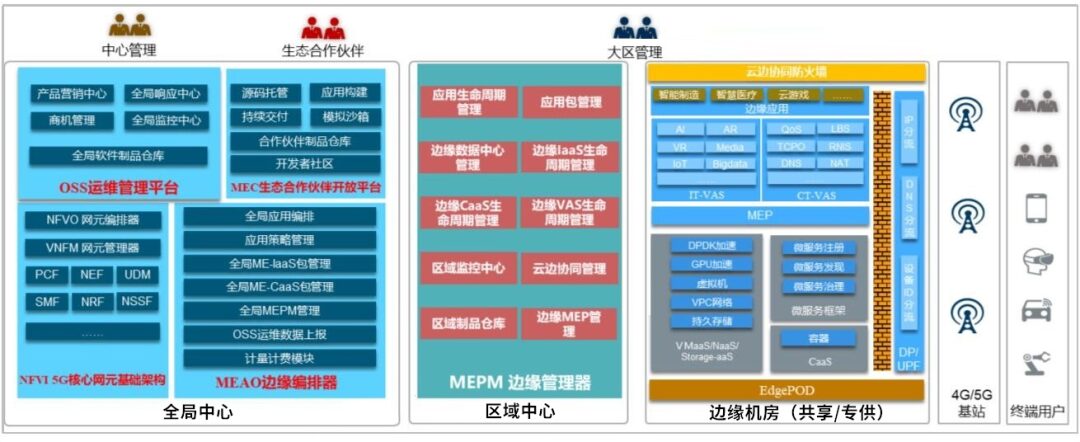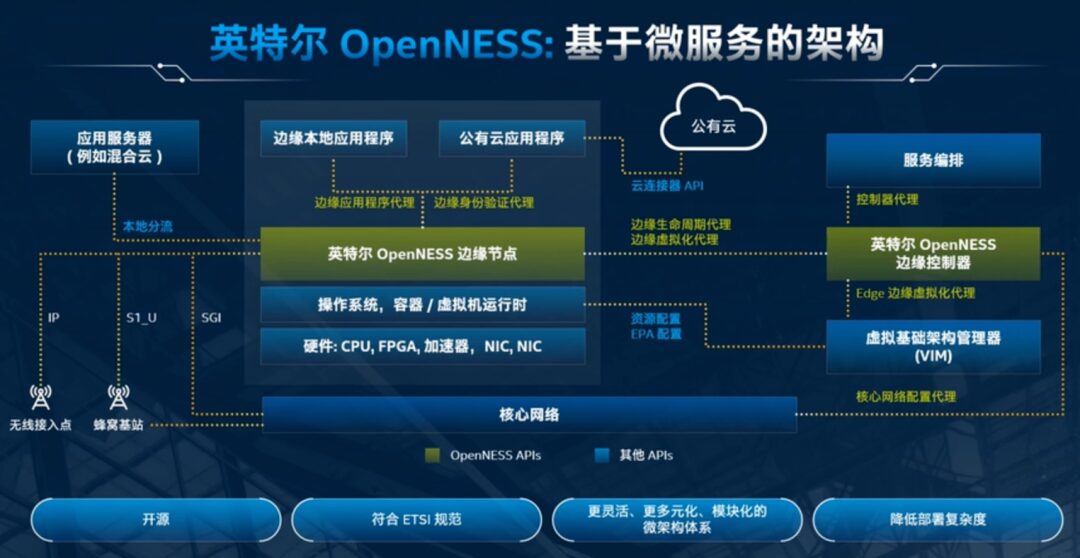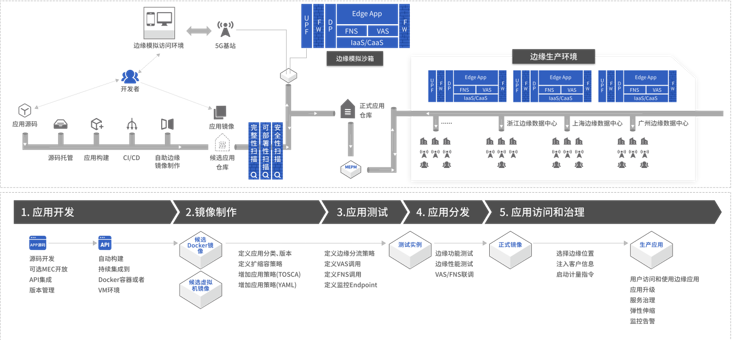With the continuous advancement of the national new infrastructure strategy, the construction of 5G networks in China has entered a phase of rapid development. At the same time, as an innovative practice of 5G network reconstruction, the attention to MEC (Multi-access Edge Computing) is also continuously rising.
MEC edge computing reflects the industry trend of cloud-network integration. It uses connection and computation as entry points to push high bandwidth, low latency, and localized services to the network edge, helping to achieve key performance indicators of 5G and providing a means for 5G to penetrate vertical industries.
Behind MEC edge computing lies enormous commercial value. The entire ICT industry hopes to participate in the exploration of this value.
In particular, telecom operators, as the builders and operators of traditional communication networks, hope to seize this opportunity, relying on their telecom assets to build edge cloud platforms, create new business models and growth points, and transform into digital service providers.
So, if operators want to gain a leading advantage in this new track and ultimately succeed, what are the key factors?
On June 28, at the China Unicom & Intel MEC Developer Seminar, experts from China Unicom, Intel, Red Hat, and Shiboyun shared their insightful views on this issue.
According to the experts, the key to the success or failure of edge computing lies in the ecosystem. If a good ecological environment cannot be created to attract a large number of developers, then the success of edge computing is out of the question.
How can we promote the prosperity of the edge computing ecosystem?
-
Architecture Layout of Edge Cloud Platforms
First of all, there must be a sufficiently powerful platform to support it.
China Unicom is a pioneer in the field of 5G MEC edge cloud. They have been committed to the independent research and development of key technologies for edge computing and actively promote the development of the MEC edge cloud system’s industrial chain. The first fully commercial edge cloud platform in China comes from China Unicom (launched commercially on April 29 this year).
Currently, China Unicom’s edge cloud network has built more than 1,000 layout and site-level MEC edge computing nodes across the country, covering 334 cities, and can quickly provide edge computing access services to industry users.
The reason why Unicom can maintain such high construction efficiency is closely related to their platform architecture design.
China Unicom’s edge cloud adopts a three-tiered architecture system to achieve “one innovation, nationwide replication.”
Architecture of China Unicom’s Edge Cloud
The highest level is the Core Data Center (Global Center), which deploys a set of MEAO (National Unified MEC Application Orchestration System) to conduct unified global scheduling of edge resources. MEAO also connects with the group’s OSS, BSS, government and enterprise marketing portal, NFVO, and unified cloud management, providing open interfaces for developers and customers to upload business capabilities and applications.
Deployed in each province, the Regional Center Data Center is the core of China Unicom’s MEC business incubation base, deploying systems or network elements such as MEPM and MEP. MEPM (Multi-access Edge Platform Manager) is the actual carrier of MEAO’s scheduling capabilities. It has regional autonomy capabilities, allowing operation and maintenance personnel to manage all edge data centers within the region and control edge resources.
The lowest level, the Edge Data Center, corresponds to the core/aggregation/site access data center nodes in various cities, which can provide various underlying capabilities such as GPU acceleration, persistent storage, etc., and integrates CT and IT’s VAS capabilities, IP diversion capabilities, and DNS diversion capabilities.
China Unicom’s edge cloud platform has strong business carrying capacity and efficient management orchestration efficiency, supported by a robust underlying software and hardware platform and technology.
On the software side, China Unicom has independently developed an operation platform, achieving overall scheduling and unified management of resources based on the coordination of edge platform orchestrators and managers, as well as seamless docking of cloud-edge collaboration at different levels.
To have more efficient orchestration capabilities in multi-cloud and cross-platform environments and reduce the complexity of platform and network infrastructure, Unicom’s self-developed edge platform refers to Intel’s open-source software suite OpenNESS, based on a microservices architecture, integrating new hardware enhancements, open-source technologies, and a rich toolkit to help users develop edge applications more agilely.
Architecture of Intel’s OpenNESS Open-source Software Suite
On the hardware side, the Unicom edge cloud platform uses Intel’s next-generation data center overall solution NGCO as a carrier, integrating Xeon Scalable processors, Optane persistent memory, Intel Ethernet network adapters, and other products’ servers, which are powerful and flexibly deployable.
It is worth mentioning that the architecture of the Unicom edge cloud platform strictly follows the standards and specifications of 3GPP and ETSI. Based on this, further expansions and extensions have been made. For example, in terms of network security, UPF decoupling, and interface openness, further enhancements have been made.
-
Introduction of Edge Cloud Ecosystem
A strong platform is the prerequisite for building an ecosystem, but the key issue is how to attract the ecosystem.
In order to attract more developers to join the 5G MEC edge computing application development, China Unicom has established and opened the MEC ecosystem developer platform.
In the platform, China Unicom advocates three openings: capability openness, technology openness, and tool openness.
In terms of capability openness, China Unicom has opened various capabilities including edge networks, shared AI platforms, general video encoding and decoding, and IoT platform management.
In terms of technology openness, China Unicom insists on opening capabilities in ICT-IaaS for application hosting, acceleration devices, and edge interfaces, while being compatible with open-source standards. China Unicom, together with Intel, is committed to achieving platform lightweighting, achieving high availability capabilities while maintaining standard platform interfaces. Many applications can be seamlessly migrated to the edge platform.
In terms of tool openness, China Unicom supports developers throughout the lifecycle of application development, allowing developers to start from the source code, complete the design, development, verification, and launch of edge applications, supporting code hosting, code building, continuous integration, continuous delivery, image repositories, and a series of key development capabilities, providing comprehensive incubation tools.
At the same time, China Unicom has also developed the ability to create and scan edge application packages, allowing developers to self-generate edge packages and customize some configurations based on existing applications.
-
Joint Assurance and Win-Win Benefits of Edge Cloud
In addition to building a strong edge cloud platform and fully working on ecosystem introduction, China Unicom also protects and incentivizes edge cloud developers from the aspects of joint assurance and win-win benefits.
In terms of joint assurance, China Unicom’s edge cloud provides operational monitoring, maintenance monitoring, a unified response center, and partner support entry, supporting centralized management and business support after the ecosystem goes live from multiple aspects such as operation and maintenance, operation, and automated response, ensuring the landing of MEC applications and the feedback loop of demand.
In terms of win-win benefits, China Unicom follows the principle of “open capabilities, incubate innovation, scale replication, and revenue sharing”, providing MEC edge business developers with rich market returns such as “innovation business incubation funds”.
Industry-renowned research institution Gartner predicts that by 2022, 65% of data will be stored and processed in edge data centers. In the next 1-3 years, edge computing will enter a period of large-scale commercial deployment. IDC predicts that by 2020, more than 50 billion terminals and devices will be connected, and the market size of edge computing will exceed one trillion.
Undoubtedly, edge computing contains enormous market value. And the ecosystem is the primary tool for exploring this immense value.
Without an ecosystem, edge computing cannot succeed. Building a prosperous ecosystem requires standing in the developer’s shoes, providing comprehensive technical support and rights protection for developers, allowing them to confidently join the ecosystem and collaboratively create value around edge cloud.
He who has the ecosystem has the world. The active practices of China Unicom and Intel point to the direction for the success of edge computing.
Watch the wonderful replay of the seminar

↙↙↙ Click “Read the original text” to watch the wonderful replay




